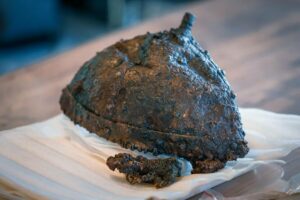“Uncovering the Hidden Genius: The Surprising Origins of the World’s First Machine Gun!”
“This is indeed a very curious world. I was the first man in the world to make an automatic gun. It is astonishing to note how quickly this invention put me on the very pinnacle of fame. Has it been anything else but a killing machine, very little would have been said of it. From the foregoing it will be seen that it is a very credible thing to invent a killing machine, and nothing less than a disgrace to invent an apparatus to prevent human suffering.”
Expand for References
Belloc, Hillaire, The Modern Traveller, Edward Arnold, London, 1898, https://archive.org/stream/moderntraveller00belluoft/moderntraveller00belluoft_djvu.txt
Johnson, Ben, The Puckle Gun or Defence Gun, Historic UK, https://www.historic-uk.com/HistoryUK/HistoryofBritain/The-Puckle-or-Defense-Gun/
Leonardo da Vinci – Weapons of War, Italian Renaissance Art, https://www.italian-renaissance-art.com/Da-Vinci-weapons.html#gallery[pageGallery]/9/
Marder, Patrick, Mitrailleuse, Debellum, https://web.archive.org/web/20060620004234/http://www.debellum.org/mitrailleuse.asp
Gatling Gun, History, September 9, 2021, https://www.history.com/topics/american-civil-war/gatling-gun
LaFrance, Adrienne, People Thought Machine Guns Might Prevent Wars, The Atlantic, January 26, 2016, https://www.theatlantic.com/technology/archive/2016/01/maxim-guns/428253/
The Gatling Gun, Civil War Guns, January 26, 2018, https://civilwarguns.blogspot.com/2018/01/the-gatling-gun.html
Part II – Manually Operated Guns, https://www.ibiblio.org/hyperwar/USN/ref/MG/I/MG-2.html
McCollum, Ian, Union Repeating Gun, Forgotten Weapons, https://www.forgottenweapons.com/manual-machine-guns/union-repeating-gun/
Bocetta, Sam, Machine Gun – How Hiram Maxim’s Deadly Invention Changed History, Military History Now, October 24, 2017, https://militaryhistorynow.com/2017/10/24/machine-gun-how-hiram-maxims-rapid-fire-invention-changed-history/

















